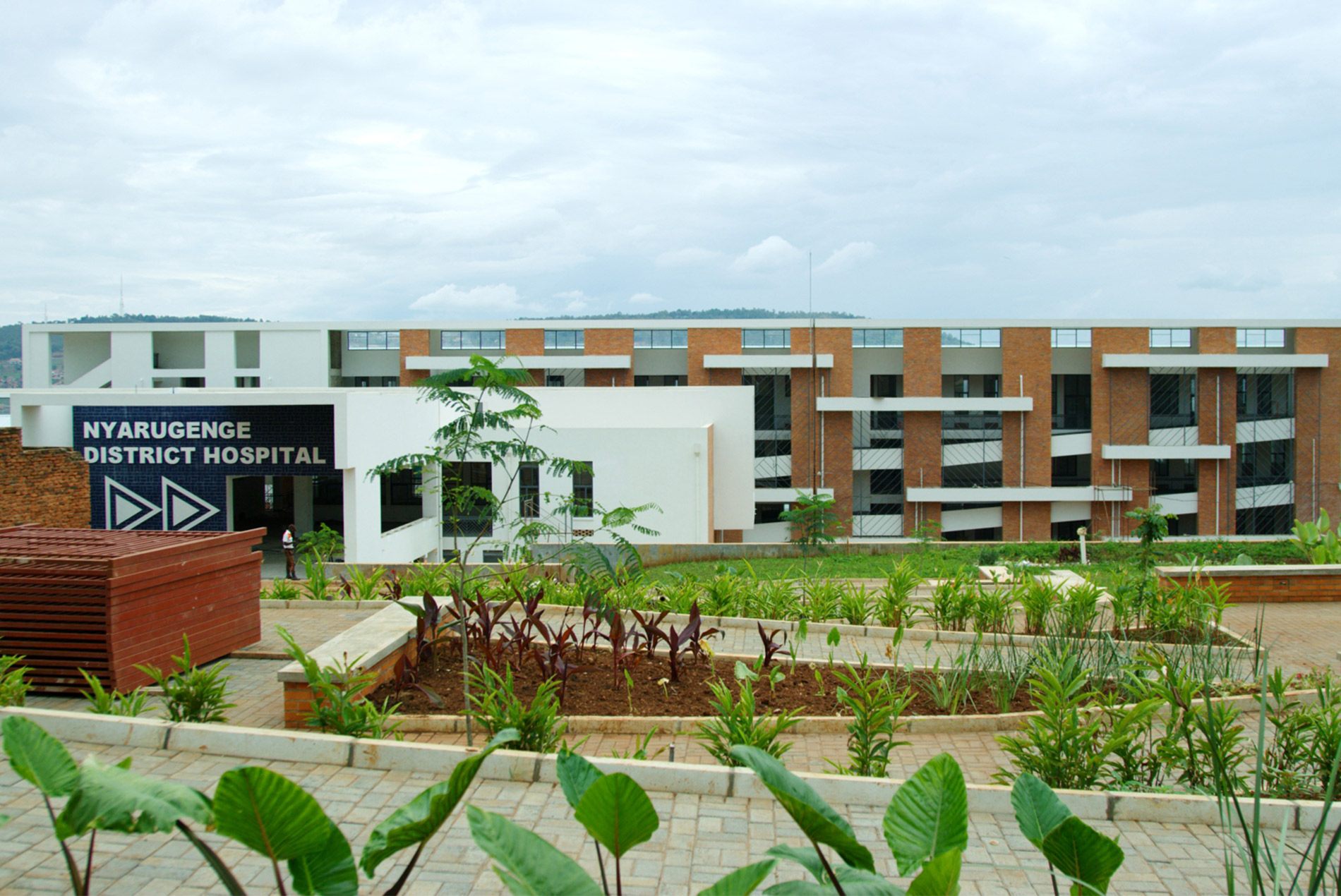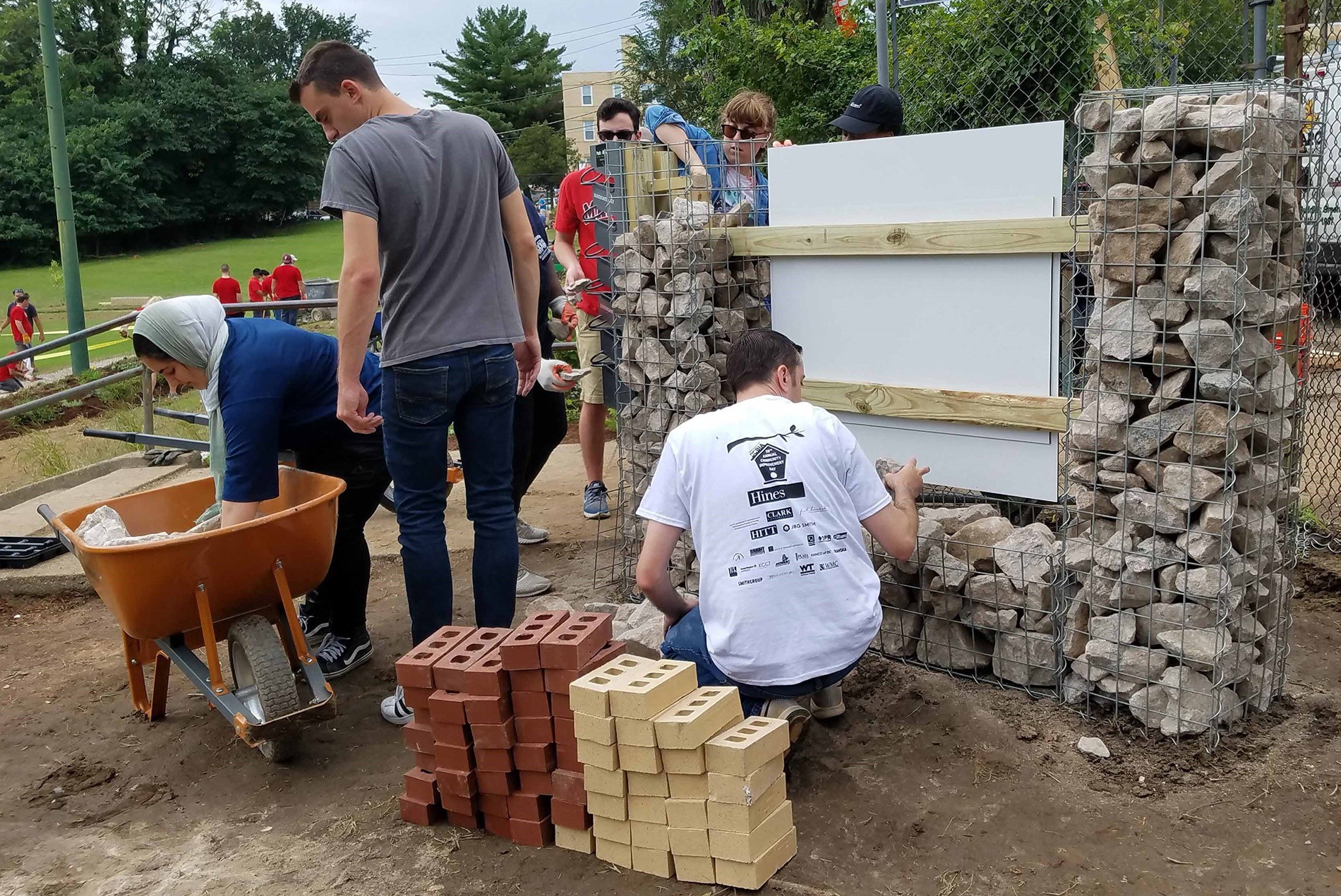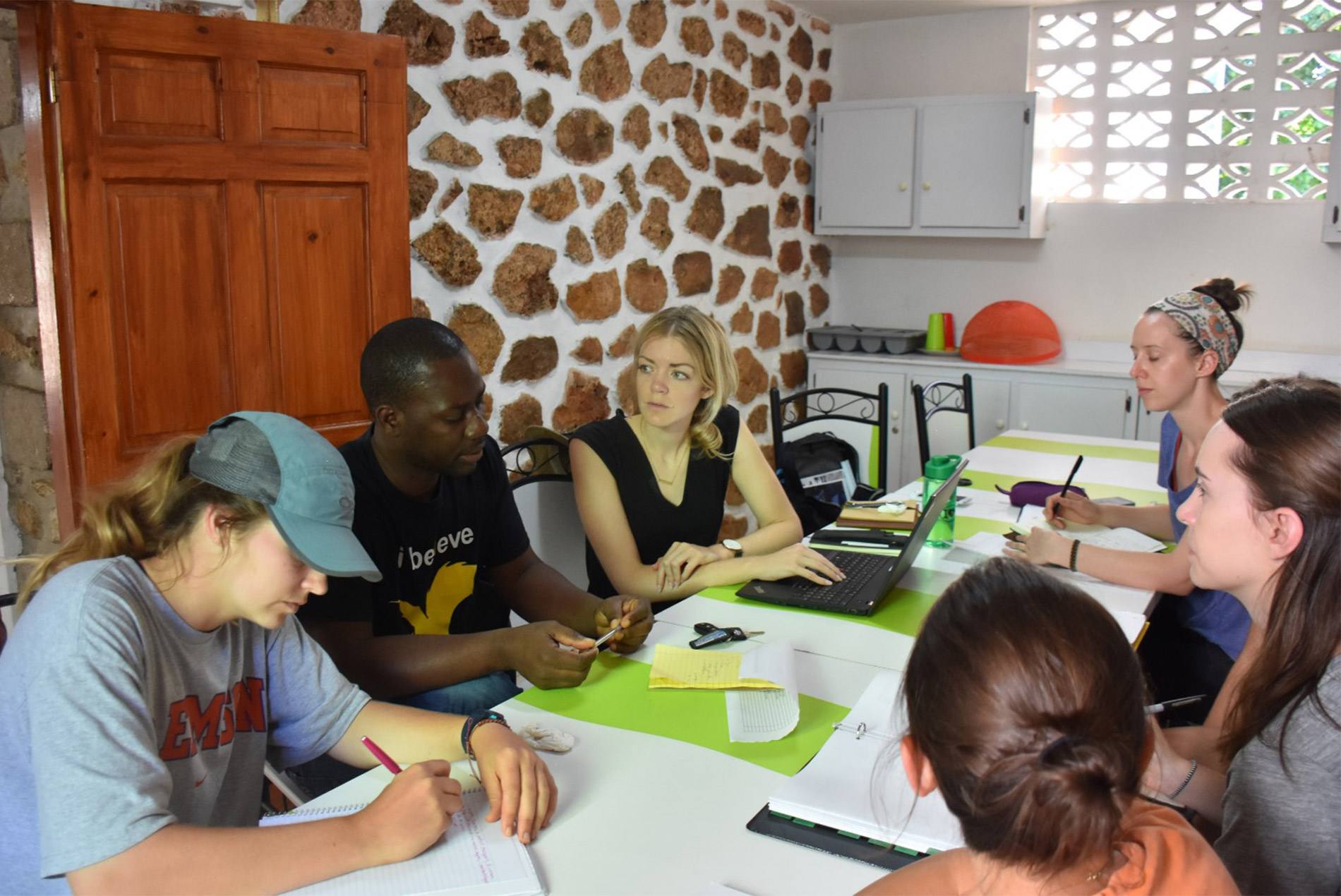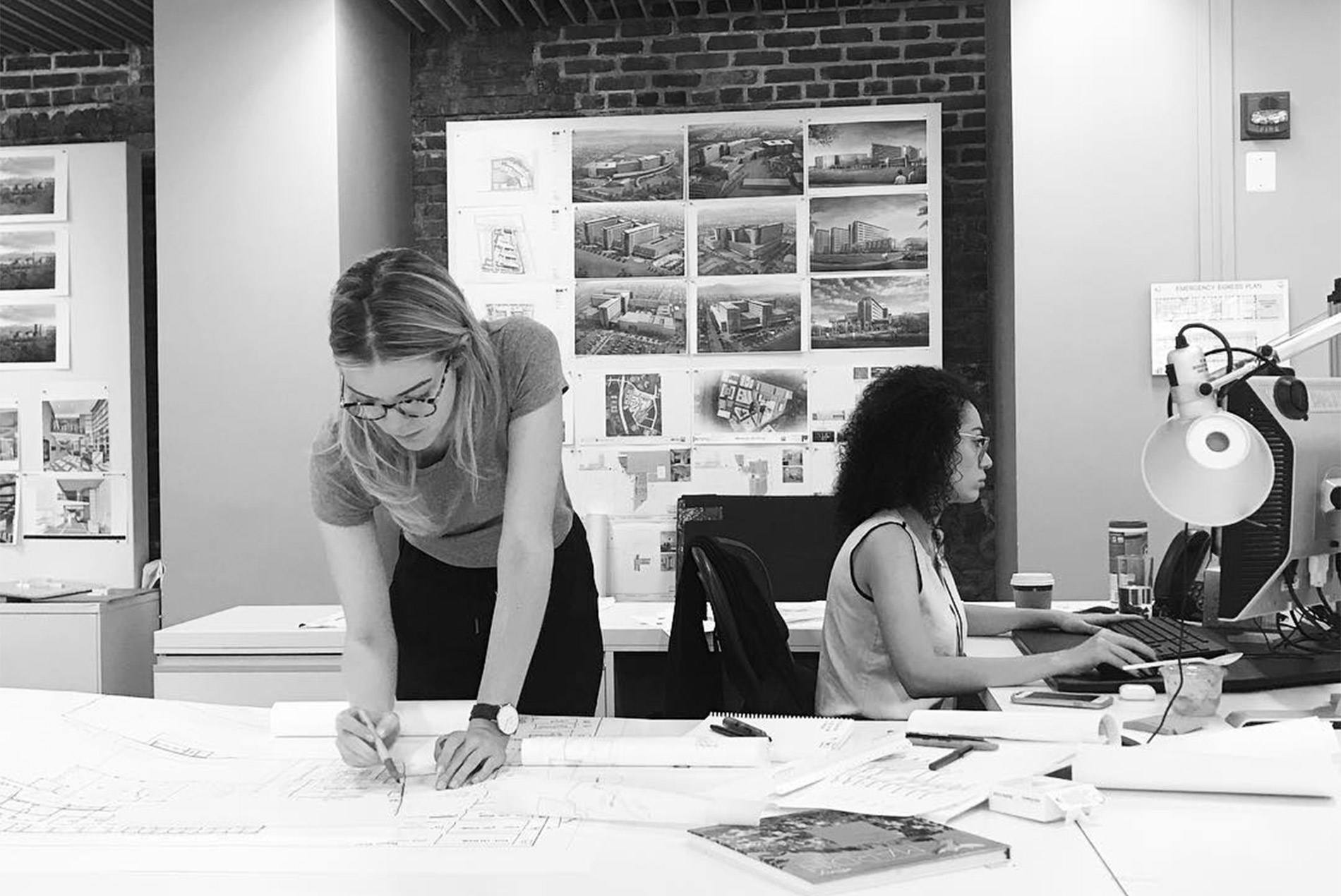Emily McGowan, a medical planner in HOK’s Washington, D.C., studio, shares how designers at firms like HOK can discover opportunities for social responsibility.
By Emily McGowan, AIA, LEEDGA
If you are like me, you have asked yourself how you can best apply your skills as a designer to benefit people in need. You also have wondered if it is possible to commit yourself to pro-bono design while working full-time for a large, for-profit firm like HOK.
Though it may seem counterintuitive, I’d argue that designers working for big commercial firms have as many—perhaps even more—opportunities to get involved and give back than those working for grassroots or charitable organizations. I know this because, for the early part of my career, I worked in the non-profit, mission-driven design field.
After graduating from architecture school, I was awarded a Global Health Corps Fellowship and placed with a non-profit design firm that was assisting the Rwanda Ministry of Health develop design guidelines for the construction of two prototype hospitals.

The Nyarugenge District Hospital, which I worked on, serves people in one of the most densely populated and underserved areas of Rwanda.
Although this was incredibly fulfilling and important work, I also came to realize the challenges and limitations within the non-profit model: insecure funding, lack of resources and the inability to always lure or retain appropriate talent with the right experience. I became curious about how operations might differ within a large design firm with more resources and expertise.
In 2017, I joined HOK. The transition opened my eyes in two important ways. First, I came to realize how I could grow professionally by working and collaborating with a wealth of experts across the HOK network. Secondly, and equally important for me, I was delighted to discover I still had the ability to use my design skills for good through HOK Impact and other volunteer and pro-bono opportunities offered through our DC studio.
One of the most rewarding projects we participate in annually is the Community Improvement Day sponsored by the District of Columbia Building Industry Association (DCBIA). Local partners and volunteers across the design and construction industry engage with stakeholders to lead community programming efforts that identify, design and deliver new community assets for DC residents.

Volunteers, including members of HOK Impact, help beautify Washington, D.C.’s Keene Field in 2018.
In 2018, HOK employees helped recondition the underutilized site of Keene Field in Ward 5 that abuts a DC bilingual public charter school. Improvements included upgraded landscaping, a new bike path, shade structures, playground equipment and replacement of the perimeter fence.
Another project I’m particularly proud of is a partnership between HOK and my alma mater, Clemson University. Together with the Center for Engineering in Developing Countries (CEDC), we are collaborating on a design to renovate two existing procedural rooms within the Zanmi Lasnate Medical Campus in Cange, Haiti. Once complete, the rooms will help ease demand on the overburdened hospital system by redirecting routine and lower acuity patients and caseloads into a more efficient, modern and localized operational settings.

HOK colleague Autumn Wines (right, top) and I participate in a 2018 charrette in Cange, Haiti, to better understand the needs of the community.
Each year I have the privilege of talking to architecture students at University of Maryland about pro-bono design for their professional practice class. This year the question students most often asked was how we can provide pro-bono services during a pandemic. I admit it has been challenging within the work at-home environment. I’m heartened, however, in knowing that the pandemic won’t last forever.
COVID-19 has reiterated the undeniable link between health and the built environment, particularly when it comes to people in disenfranchised and minority neighborhoods who suffer shorter life spans and greater incidences of disease than those in wealthier communities. This is why it is imperative that designers understand our responsibility to advocate for and create spaces that improve the lives of all people.
As we enter a new year, I encourage you to think about how you might use your design talents to help an in-need organization or community. By leveraging the resources, talent and expertise within a global design firm like HOK, I’m excited to see how we can better represent the architectural profession and create a larger and more systemic impact on society.
